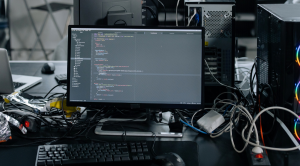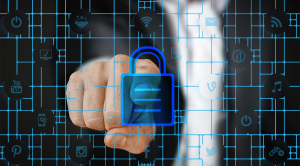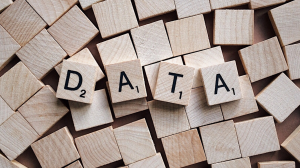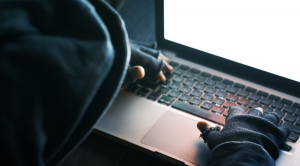Some simple help methods for data security users
Many cybersecurity research reports have shown that today's users still face the risk of becoming targets of social engineering, phishing campaigns, identity theft, and fraud. other cheats. Both the European Union and several states in the United States, including California, Utah, Colorado and Virginia, have imposed strict regulations requiring businesses and organizations to protect users' personal information.
However, individual users often do not pay enough attention to protecting their own and others' personal information. Below, the article will introduce some basic rules that users need to follow to stay up to date with the best security practices and improve their understanding of the threats they may face. A solid understanding of these will help minimize the risk of falling victim to data breaches.
Good authentication and password management
Many people think that long gone are the days when people often used simple words or phrases such as name, date of birth, or even the word "password" to set as a password. However, in fact, currently, the most commonly used password in the world in 2022 is still "password", ranked second on the list is the number sequence "123456".
Given this reality, it is no longer surprising that up to 81% of corporate data breaches are due to the use of insecure passwords. This is why understanding and strictly following the rules when managing and using passwords and other authentication methods is the most important basic step users should take to ensure security. all personal data.
Some basic rules for password management include:
Use strong passwords: Passwords should have at least 12 characters, 16 characters is better, and should include letters, numbers, and special characters mixed together. Passwords should avoid dictionary words as much as possible. Even though they are unique and unpredictable, they still need to be memorable and relevant to users.
Avoid reusing passwords: Especially for different accounts to avoid the situation where if hackers access one account, they may try and use the same password to access another account of yours. that user.
Don't share your password with anyone: Because there's still a chance they'll write it down where someone else can find it.
Use a password manager: These tools help simplify the process of creating secure passwords for any number of services. Despite the fact that some services have been successfully hacked, security experts still advise users to use them because of the security benefits they provide. Every system has the potential to be hacked, and this often happens due to insecure passwords. Password managers effectively force users to stop using insecure passwords, so the risk of hackers gaining access to any of the user's accounts, including the password manager, is also high. will be significantly reduced.
Use two-factor authentication: This is the most important factor, because two-factor authentication will successfully prevent up to 99.9% of attempts to gain unauthorized access.
Always update new versions of software
Delaying or declining offers to download software updates could make it easier for hackers to exploit vulnerabilities. Outdated and out-of-date software, operating systems and other settings provide few options for easy attacks.
Nowadays, many devices and applications offer automatic update features, so it is best for users to enable this automatic update mode. However, operating system updates can render the device unusable for a period of time ranging from a few minutes to a few hours, and typically must be manually restarted after the download is complete.
Particularly important systems and applications that users need to ensure are running the latest updated versions include:
Operating system: updates often include necessary security fixes.
Firmware updates: These updates affect how the device hardware runs itself. This is a particular cause for concern with IoT devices that do not hold a lot of valuable data (like smart home appliances) but can be used to gain access to other devices. be different.
Web browser: This is often the first line of defense against threats launched from malicious websites.
Anti-virus and anti-malware: Make sure it is updated regularly to prevent the latest threats.
Read and understand the data protection and privacy policy
In fact, very few users take the time to read all data protection and privacy regulations before agreeing to access online services, use software or hardware. your new. Even if users know about how their personal data is collected and used, they still click "I agree" without being sure that consent can cause data security risks. data and your privacy.
Therefore, if users want to take the protection of their personal data seriously, they need to be more conscious in reading and understanding the data protection and privacy policy before agreeing to the requirements given.
Use VPN Rice
A virtual private network (VPN) allows a user's device to connect to the Internet through a third-party server instead of directly, and also encrypts all data sent or received. This helps improve user privacy by ensuring that connecting services cannot know who the user is and can only see the address of the third-party server.
When it comes to online security and data protection, VPN technology is one of the most advanced and easiest steps anyone can take to ensure that they do not expose their personal data when they conduct business online. VPN solutions are very popular today, available in both free and paid versions. However, security experts recommend that users choose paid services because they have a higher level of security.
Regularly check your privacy settings
Today, social networks and many other online services (such as cloud service providers) mostly provide comprehensive options for deciding how much information users want to share. In the context of social networks, these options include details such as whether others can find that user by email address or phone number. Or once found, they can access other information that the network carries that stores data about that user uploaded (images, videos, personal information,...).
In addition, in many cases, users use a certain website or service for a long time, so they may have default privacy settings for convenience and do not care about checking them. Check those settings again. However, to keep personal information and sensitive data safe, users need to regularly check their privacy settings on participating platforms or websites and services. Regularly use personal information.










